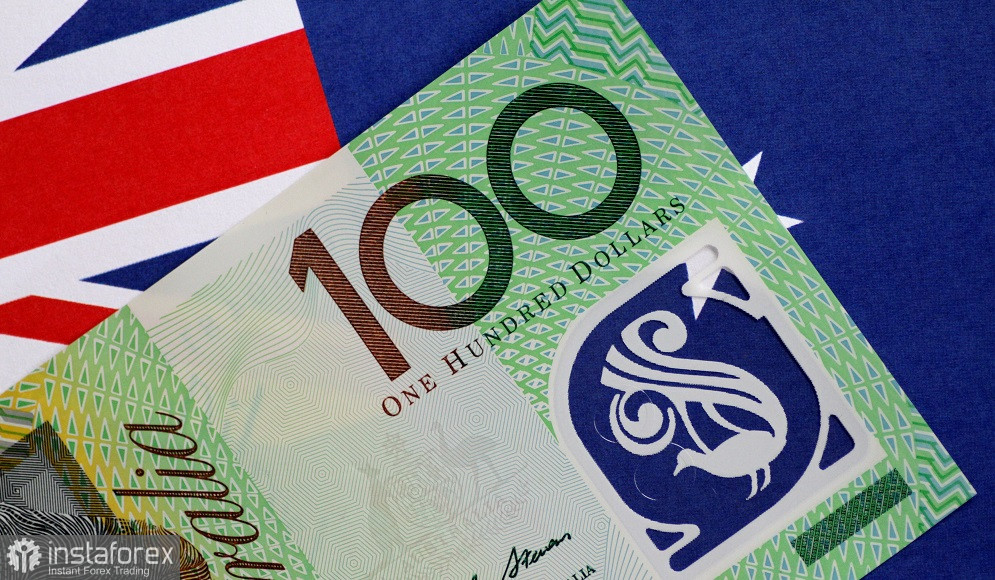The AUD/USD currency pair today demonstrates a fighting spirit: during Tuesday's Asian session, the Aussie regained some of the lost positions, rising to the 0.6740 resistance level (the lower boundary of the Kumo cloud on the D1 timeframe). Such price dynamics was due to several fundamental factors. Firstly, AUD/USD buyers were happy with the minutes of the RBA's April meeting, which turned out to be quite hawkish. Secondly, traders of the pair reacted to the publication of data on the growth of China's GDP. Many components of the report came out in the "green zone," reflecting the recovery of the Chinese economy. Such fundamental circumstances allowed the buyers of the pair to stop the greenback, which strengthened its position at full speed throughout the market.
RBA minutes
Recall that following the April meeting of the Reserve Bank of Australia, the central bank members decided to leave the OCR unchanged – at 3.60%. The market doubted until the last minute that the regulator would press pause, although most experts still leaned towards this option (probability of wait-and-see position was estimated at about 70%). For example, Goldman Sachs currency strategists expressed confidence on the eve of the meeting that the RBA would raise the rate by 25 basis points. Arguing their position, they recalled that the consumer price index in Australia is still at too high a level, and in the service sector, it is even accelerating.
However, the Reserve Bank decided to "show restraint," stating that monetary policy "works with a delay," so the full effect of previous increases "is not yet felt."

But notably – despite the implementation of the "dovish" scenario, the Australian dollar quickly recovered from the initial drop. The fact is that the RBA de facto did not complete the monetary policy tightening cycle but suspended it, focusing on this aspect. In the accompanying statement, the central bank specifically emphasized that "some tightening of monetary policy may be needed" in the future, as the board still intends to return inflation to the target level "and will do everything necessary to achieve this target."
The RBA minutes published today not only repeated the theses already voiced, but also revealed some details of the April meeting. In particular, it became known that members of the regulator "actively considered" the option of increasing the rate before deciding to pause. According to the text of the document, the decision to wait "was not easy," as an unexpected surge in migration and wage increases for civil servants strengthened the case for an additional round of rate hikes.
Commenting on the results of the April meeting, RBA Governor Philip Lowe emphasized that the announced pause does not mean the rate hike cycle is over. According to him, the regulator may tighten monetary policy further "if inflation and consumer demand remain at a high level."
Such rhetoric suggests that if the consumer price index in Australia resumes its growth (a downward trend was recorded in January and February), the RBA will "hit the gas pedal," raising the interest rate again. This disposition increases the importance of inflation releases, primarily the CPI.
Growth of the Chinese economy
During today's Asian session, China published a block of important economic data, the lion's share of which was in the "green zone." Thus, China's GDP volume in the first quarter of this year rose by 4.5% year-on-year, with a forecast of 4.0%. Meanwhile, growth of 2.9% was recorded in the fourth quarter of last year. Retail sales grew by 10.6% YoY, with a forecast of 7.5%. Industrial production volume increased by 3.9% from 2.7%.
As you know, China is one of Australia's main trading partners, so these results strengthened the position of AUD/USD buyers.
Conclusions
The AUD/USD pair is demonstrating an upward trend today not only due to the weakening of the American currency (the U.S. dollar index is actively declining on Tuesday), but also due to the strengthening of the Aussie. The RBA minutes "tied" the fate of the interest rate to the dynamics of inflationary growth: if the March inflation in Australia turns into the "green zone," the probability of another 25-point rate hike will noticeably increase.
Chinese reports, reflecting the growth of the Chinese economy, provided additional support for the Aussie.
Technically, the pair is currently testing the 0.6740 resistance level (the lower boundary of the Kumo cloud on the daily chart). If AUD/USD buyers overcome this target, then the next target of the upward movement will be 0.6790, which is the upper line of the Bollinger Bands indicator on the same timeframe.





















